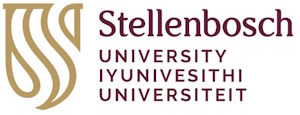
Talon Garikayi, a PhD graduate in Mechatronic Engineering, is motivated by a desire to help amputees in Africa. He says: “I grew up in a Zimbabwean village close to the Mozambican border and the woodlands were covered in landmines which were planted during Zimbabwe’s civil war. As a young boy, I witnessed a few of my fellow villagers losing limbs, when they unwittingly stepped on these obscured mines, during firewood gathering and cattle herding. I saw very productive people being reduced to beggars and families torn apart due to loss of limbs. Seeing this filled me with a deep desire to do more to help.”
Talon obtained an honour’s (2010) and a master’s degree (2012) in Engineering in Zimbabwe, he did a brief stint in industry and also lectured at the Harare Institute of Technology. Later, his motivation to help others was further influenced by his brother’s unfortunate accident in 2012. He explains: “My young brother was involved in a bus accident and had to undergo several operations on his lower limbs. That became a turning point in my life. I realised that as much as my research initially focused on improving productivity of manufacturing companies and providing clean water and electricity, less emphasis had been made on improving human capabilities of the handicapped. During my brother’s rehabilitation, at every stage the medical doctors had to improvise due to the lack of inserts and implants. I saw my brother struggling to regain mobility and it took him well over four years to regain his ability to walk.
“My brother’s journey to rehabilitation and other related life experiences, is what greatly influenced me to choose Biomedical Engineering research as a field of study. I had no prior experience in this field, but I had a passion to help those in need of biomedical engineering solutions. I therefore decided to continue with a PhD. Up to 2014, there was no institution in Zimbabwe that offered a PhD in Engineering. This left me with my second option, South Africa. As a person who enjoys new experiences, I had never lived in South Africa before and I wanted an institution with a good reputation in Biomedical Engineering, as well as a place where I would feel secure. I was particularly inspired by the Biomedical Engineering Research Group (BERG) at Stellenbosch University as it is one of the most influential research groups in South Africa that focuses on developing affordable and reliable devices and solutions for the medical field.
“I realised that there is more to acquiring a qualification especially when I took cognisance of an African cultural expectation of ‘Ubuntu’ which translates to compassionate human behaviour and how one conducts oneself well in a community. With this need for the spirit of ‘Ubuntu’, I sought a university that would also empower me with new social skills, community impact and not just a qualification. Stellenbosch University represented much of what I sought and aligned to my personal values and aspirations.
“I began my studies in January 2015 as a member of BERG, which was a dream come true. My supervisor, Prof Dawie van den Heever, provided me with everything that I needed to carry out my research. I had access to the Biomechanics Laboratory at Tygerberg Campus and the Human Motion Unit at Stellenbosch Campus. The team within the Mechatronics Laboratory were very helpful during experimentation and prototyping of my proposed design for my thesis study. After completing my studies in three years, I can attest that I have gained a plethora of skills in the design of prosthetic devices for amputees. I gained new friends and acquaintances, who have impacted positively on my growth.
“My immediate plan is to become a postdoctoral student, affiliated with the BERG, so that I can further assist upcoming researchers. I am currently developing the designs and prototypes based on improvements made to the existing devices in the market with some research angled towards coming up with good material substitution for titanium and also a viable manufacturing process.”
Talon’s experience as a Maties PhD student has been very positive. He sums it up in these words: “I would encourage anyone seeking an institution with a robust research base, collaborative work spaces and opportunities of steep intellectual and social growth to consider studying at Stellenbosch University. It has since become my home away from home and I am eternally grateful for everyone who helped me, contributed to and walked with me on my PhD journey. I am certainly looking forward to continued research outputs with BERG and I hope I will be a valuable team player!”
Prof Dawie van den Heever has only praise for his student: “Talon is a wonderful person. He is intelligent, ambitious and works extremely hard. He is a go-getter and a trend-setter and is driven by his passion to help victims of landmines and other amputees by designing and developing better prostheses to improve their lives”.
Title of Thesis: Development of a robust myoelectric control architecture for lower limb robotic prostheses applications.
100-word summary:
The use of a passive foot with a fixed ankle has negative effects which include asymmetric gait, osteoporosis and musculoskeletal problems. The research aimed at alleviating these problems by developing a myoelectric robust control architecture for lower limb robotic prosthetic applications. Initially, muscles at the residual amputated stump were characterised along with anatomical and orientation angles of the amputee during normal gait. An intelligent control architecture was developed based on Linear Support Vector Machines. The developed biomechatronic robotic prosthetic ankle achieved a classification accuracy of 99.25% and has the capability to restore a symmetrical amputee’s gait; thereby, improving amputee lifestyle.
Photograph:
Talon Garikayi.



